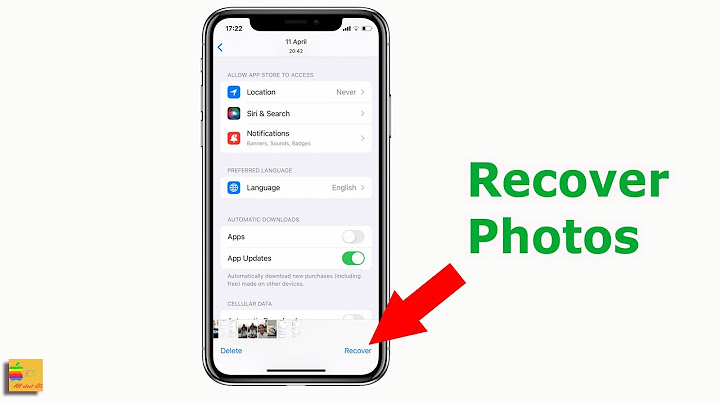 Show
When trying to conceive with IVF, Drs. Marc Kalan and Nurit Winkler understand that many women would love to find out if they're pregnant at the time of embryo transfer. Although it would be great if that were an option, the reality is patients must wait about two weeks to take a pregnancy test after frozen embryo transfer. Servicing Encino, CA, and the surrounding Bakersfield and Los Angeles areas, Drs. Kalan and Winkler explain why it's important to wait to take a pregnancy test during patient consultations. For more information, we welcome you to schedule a consultation. What Do Pregnancy Tests Detect?Home pregnancy tests detect pregnancy by checking for a certain hormone, called human chorionic gonadotropin (hCG), in the urine. The hCG hormone is naturally released once a fertilized egg implants within the uterus. In other words, at the time of pregnancy. Why Wait to Take a Pregnancy Test after Frozen Embryo Transfer?Many women who have undergone frozen embryo transfer will want to test for pregnancy as soon as possible, but have probably heard that they should wait two weeks after transfer. In order to understand why women are told to wait to test after embryo transfer, we first need to consider non-frozen embryo transfer.
Waiting to Test Helps Avoid Inaccurate Pregnancy TestsIf hCG levels are generally not falsely elevated from IVF medications, why wait to take a pregnancy test after frozen embryo transfer? Embryo implantation can take several days after frozen embryo transfer. Testing immediately after transfer may result in a negative test, when in fact the embryo hasn't implanted yet. Waiting to test can help avoid a false negative and enduring the disappointment that can bring. Another important thing to note is that home pregnancy tests are not always sensitive enough to detect low levels of hGC in the urine during the early days of pregnancy. Generally, by two weeks, hCG levels are high enough to detect. Learn More about Frozen Embryo TransferIf you have questions about testing for pregnancy after frozen embryo transfer or would like to learn more about IVF, please call (818) 208-5481 to schedule a consultation at Los Angeles Reproductive Center. Related to This
After undergoing in vitro fertilization (IVF) treatment and having an embryo transfer, the two-week wait for that (hopefully) big fat positive pregnancy test can feel agonizingly long. You’ve just spent a month taking meds to prepare your body for transfer, spent thousands of dollars on treatments, attended dozens of appointments, and transferred a precious embryo that you worked so hard to create. The stakes feel incredibly high; we know because we’ve been there. Infertility–and especially IVF–can feel like an endless waiting game, but you’ve made it this far, and you just need to be patient for a little bit longer. So how soon can you actually take an at-home pregnancy test after IVF? How Early Can You Test After an Embryo Transfer?We’ll just cut to the chase: the most accurate time to take a pregnancy test after IVF is 7 days after a day-5 embryo transfer. Why? After a day-5 embryo transfer, it takes a few days for the embryo to safely implant into the endometrial lining of your uterus. Once the embryo has implanted, your body will begin producing hCG, otherwise known as “the pregnancy hormone.” This is the hormone that at-home pregnancy tests detect in your urine. Depending on when implantation occurs, some early at-home pregnancy tests might be able to detect pregnancy as early as 5 days post-transfer. To do so, you’ll want to use a high-sensitivity pregnancy test, which detects hCG at a threshold of 25 mIU/mL or less. Usually, your fertility clinic will schedule an hCG beta blood test for 8 or 9 days post-embryo-transfer, which studies have shown yields very predictive results for successful pregnancies of both fresh and frozen embryo transfers. This test will give you the most accurate results, as it measures the specific level of hCG in the blood. The Pros and Cons of Testing EarlyYour fertility specialist might ask you not to take an at-home pregnancy test and to wait until you go in for the blood test, but, let’s face it, waiting is hard! And you’ve certainly done plenty of it so far. So, let’s look at some of the pros and cons of at-home testing.  The obvious pro: you might get your results sooner! The cons list is a little longer, but you can weigh the options yourself and find peace in at least having all of the information. The biggest con is that an at-home test after an IVF transfer can provide false results, either negative or positive. Some of your fertility medications–for example, your trigger shot–might contain hCG, which can yield a false positive in an at-home test following a fresh embryo transfer. Because this is the hormone at-home pregnancy tests look for in your urine, it’s possible to get a false positive, especially if the test is performed too early. Conversely, your hCG levels may have gone down following egg retrieval, and you might take the test before your body naturally produces enough hCG to be detected in early pregnancy, resulting in a false negative. Another possible con is simply user error. In other words, you may take the test incorrectly and get an invalid result. Lastly, and possibly the most heartbreaking scenario, is that you get a positive at-home pregnancy test and then suffer from a chemical pregnancy or an early miscarriage. Even if you receive a negative test result at home, do not stop taking your prescribed IVF medications, and be sure to continue following your doctor’s prescribed protocol. The test may have produced an invalid negative result, which can only be confirmed with an in-clinic hCG beta blood test. What is the Best Pregnancy Test for Early Detection?For a self-proclaimed pee-on-a-stick addict, the best type of early detection at-home pregnancy test is one that has high sensitivity and can detect hCG at a threshold of 25 mIU/mL or less. The First Response Early Result Pregnancy Test detects hCG at 25 mIU/mL, and Natalist’s Pregnancy Test detects hCG as low as 10 mIU/mL. If you’re going to test at home, we recommend taking a test each day starting 5 days after your transfer. As your hCG levels continue to rise, the positive result should get darker each day, and the test results will become more reliable as you get closer to your beta hCG blood test. Do What’s Best for YouThe two-week wait is its own kind of mind game. It requires the specific type of strength and hope that so much of the fertility journey asks of you. And sometimes, the waiting can be more unbearable than the risk of a false test result. So if you need something tangible to hold onto while you wait for your beta hCG blood test, take an early detection at-home pregnancy test, but take the results with a grain of salt. If testing early is going to help prepare yourself for the news–good or bad–then try to be at peace with that decision. Sending all of the big fat positive vibes your way this cycle! Brighid Flynn is a freelance writer based in Philadelphia where she lives with her husband and puppy. She is just beginning her journey toward motherhood. Can I do urine test after 10 days of embryo transfer?You should not go for a urine pregnancy test before two weeks of embryo transfer because the hCG level varies at the time of pregnancy. It remains constant in the initial stage, but it decreases in case of miscarriage.
Can you get a negative test after IVF and still be pregnant?Similarly, an early pregnancy test may produce a false negative result if your hCG hormones have not yet increased to levels detectable by an at-home pregnancy test. You can avoid some of these at-home false positives or negatives by waiting for the 7-day period of time following your embryo transfer.
What is a good hCG level 9 days after embryo transfer?On d9 after ET and FET, the optimal cut-off level of serum β-HCG was 49.05 IU/L for predicting for clinical pregnancy, and was 105.15 IU/L for predicting twin pregnancy; the two corresponding cut-off levels of serum β-HCG on d11 was 51.2 IU/L and 241.75 IU/L, respectively.
What happens after 9 days of embryo transfer?The growing embryo will then increase in size and metabolic activity, producing more hCG until it can be reliably detected 9 to 10 days after embryo transfer. This is why your clinic will likely schedule an hCG blood test around this time.
|

Related Posts
Advertising
LATEST NEWS
Advertising
Populer
Advertising
About

Copyright © 2024 muatrau Inc.


















